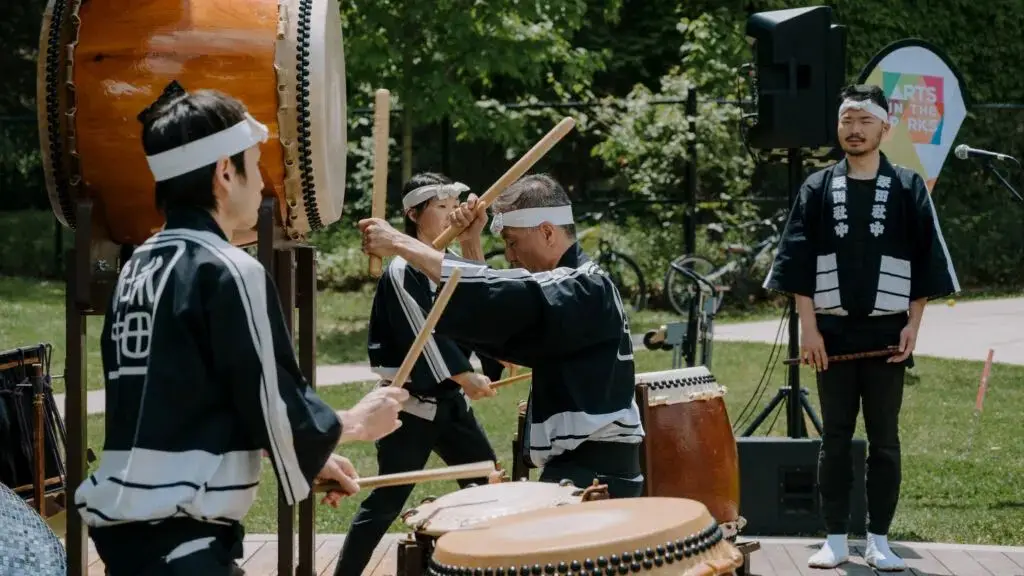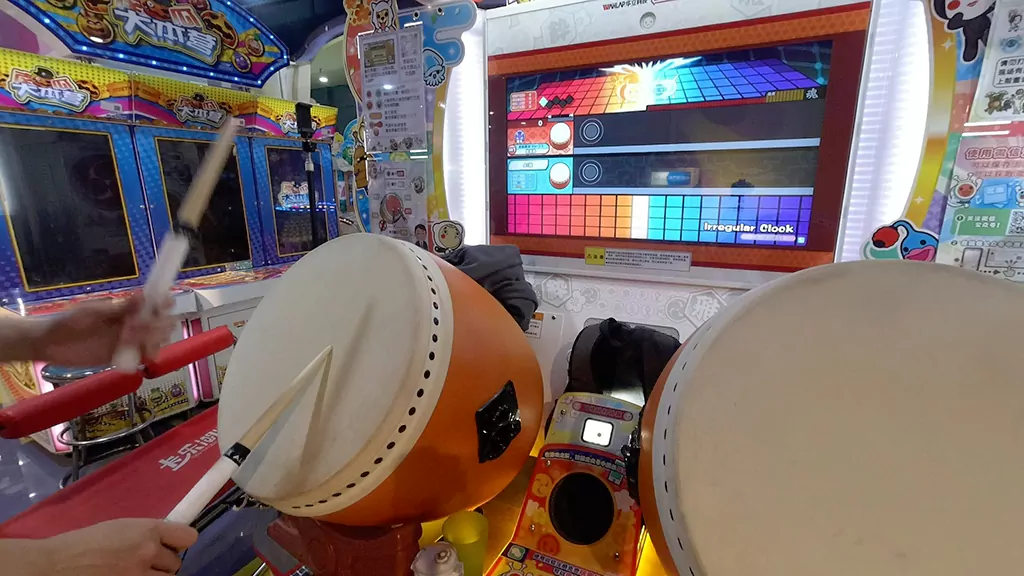Family traditions are an important way of maintaining and preserving our cultural heritage, create emotional bonds and transmit moral values. The rich histories and traditions of taiko drumming go beyond art and music and span generations and communities in Japanese culture. Through examination and description, this paper examines how taiko is passed on through family lines, and how the practice of taiko in family context (through family activities and events) fosters human relationships and preserves a sense of inheritance.

Being and Becoming Taiko: The Historical Context of Taiko as a Family Cultural Legacy
The form of taiko, consisting of traditional Japanese festival-deity based community activities and religious-ceremonial entertainment in family contexts. FAMILES AND DRUMMING AND COATS OF ARMS / FAMILES AND DRUMMING: Many families handed down drumming styles, rhythms, and stories from one generation to another, resulting in a strong sense of shared history and cultural cohesiveness. Taiko knowledge has been traditionally transmitted within small familiaI groups in line with community-based values.
This historical context has changed, but family participation has remained central. The tradition is carried on by modern family-based taiko ensembles, which stress preserving cultural roots and strengthening family.
Family Based Transmission of Taiko
Intergenerational Knowledge Sharing
Families are usually the frontrunners when it comes to preserving cultural traditions. The rhythm and rich cultural meaning of taiko drumming make it an ideal site for tranmission across generations. Generations of elders bear the responsibility of carrying on skills and tales related to taiko, keeping past traditions alive!
For instance, numerous of the best known taiko players cite family members serving as the source of their initial inspiration as well as early training. Haruto Nakamura, a pro taiko drummer (the instrument and tradition is called taiko), remembers learning his first rhythms playing at home with his grandfather, for whom “taiko was our family language, a bridge linking the past and the future.”
Ritualized Family Participation
Taiko as Family Ritual In some homes, family participation in taiko is a type of ritual to mark important moments, namely births, weddings, and celebrations. These traditions nurture cultural heritage and keep families connected.
Rhythm bonding contributes to unity, family memory, and solidarity, not to mention rhythm pedagogy. They become beloved family customs, passed down through the generations, active rituals that children look forward.
Family-Oriented Taiko Activities

Taiko, as a participatory musical art form, is well suited for family activities. Classes for families Many community centers, schools, and taiko groups offer classes designed for both children and parents to learn together, cooperating and exploring within the context of the culture they are engaging in.
Family Workshops and Classes
Workshops for family have been developed to provide structured opportunities for shared participation. The games are team based and team supportive, creating an educational atmosphere in which both children and adults learn effectively together. Families who partiicpate often describe such benefits as improved communication, greater appreciation for each other and an increased depth of emotional connection through playing or listening to music together.
Taiko in Family Gatherings
Taiko performances frequently are a part of birthday, reunion and anniversary gatherings for family members that transform these celebration into reunions to remember. They’re more than the chance for us to put on a show for our friends; they’re an emotional symbol that connects across generations and becomes something central to our families for the rest of our days.
Taiko drumming at Large Family Gatherings When a family gathering includes taiko drumming, generations interact, learn, and celebrate together.” Aiko Suzuki, director of a community taiko group,who notes that, The rhythms bring them together in a communal language that transcends age.”
Family Level Effects: Emotional and Social Gains
Its intense effect on the emotional and social makeup of the family was the revelation of taiko drumming as family activity.
Enhanced Communication
Playing drums together encourages families to communicate with each other. Even though musicians play collectively, there is requirement for good communication, trust and support. I have a clear sense for the cues and emotions of both extended family members which makes the lines of everyday communication and empathy even better.

Strengthened Emotional Bonds
Partaking in activities together, such as taiko drumming, serve to bond on an effective emotional level. Engaging in a rhythmic activity creates a sense of togetherness and accomplishment and strengthen family ties. Families immersed in taiko always talk about the way one feels more connected with others and how the vibes are livelier.
Building Family Identity and Pride
Active participation in culturally meaningful activities, such as taiko drumming, fosters a resilient family identity. Pride is nurtured among extended families based on cultural traits and achievements. This sense of pride frequently spills out in broader community involvement that enhances both family and communal life.
Case Studies of Family-Oriented Taiko Practices
The Yamamoto Family, Tokyo – Case Study
“Over the years, the Yamamoto family has been a quintessential example as to how taiko becomes an integral part of a family culture. At village celebrations and family occasions it is the three generations that continually entertain together. “Our family is close, and we have a strong emotional connection, and this is (in part) because of our relationship to taiko,” says the family. “Drumming together is what binds us,” says Masahiro Yamamoto, the family patriarch. “It’s our way of lifting each other up.”
Case: Taiko Families, San Jose, California
Fifteen-20 families from various cultural background come when invited to S an Jose Taiko’s family-friendly workshops. Participants indicate that family life has improved markedly in terms of understanding one another, communication and expression of family pride. The workshops are a demonstration of how taiko can connect people despite cultural and generational distances.

Challenges in Family-Based Taiko Transmission
Although family-oriented taiko programs can also offer great benefits, there are some problems:
Maintaining Consistency
Continuing the practice of family involvement is no small undertaking. Busy lives, generational divides and competing interests are major barriers. It is the collective effort that families have to consciously push to keep StringsUs together.
Balancing Tradition and Innovation
There are no rituals as such but families might struggle to balance traditional motives and modern influences. If taiko is to remain relevant and attractive to younger generations, and remain authentic to its traditions as well, it needs to be a conversation and a conversation that involves change.
Innovative Approaches and Future Opportunities
In order to successfully address these issues, there are innovative approaches to increasing family involvement in taiko:
Digital Engagement and Virtual Workshops
Digital platforms support remote participation – which is how many of us can still be involved. Online classes and virtual workshops create further access to continue family engagement and maintain the familial connection of taiko.

Community-Supported Family Programs
Family-targeted community-supported efforts are developed to promote continued participation. Programs with consistent workshops, performances, and cultural activities help keep families involved and culture alive and thriving.
Intercultural Family Exchanges
Promoting such intercultural interaction among families who practice similar rhythmic traditions around the globe also offers rewarding experiences with cultural diffusion contributed to cultural understanding and international community development.
Conclusion: Taiko as a Means of Maintaining Family Ties
Emotion and family are also evident in the passing of taiko on the level of transmission, channeling from one generation to the next. Taiko builds a better family life, nurturing family relationships with family-based programs, rituals and community-based services. The addition of new methods, such as telematic performance and intercultural interchange, will reinforce family taiko ensembles and allow for future generations to enjoy this rich tradition. At the end of the day, taiko is really about a family culture, bringing generations together through common rhythms, learning from one another, and forming deep emotional connections.



